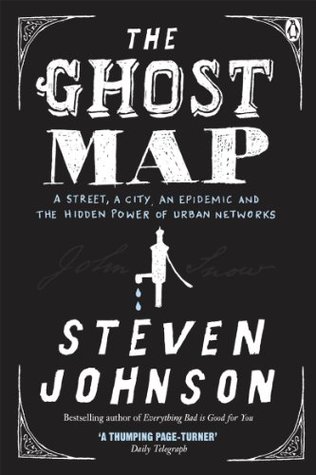More on this book
Community
Kindle Notes & Highlights
Read between
January 11 - January 26, 2020
But London in 1854 was a Victorian metropolis trying to make do with an Elizabethan public infrastructure.
When John Nash designed Regent Street to connect Marylebone Park with the Prince Regent’s new home at Carlton House, he planned the thoroughfare as a kind of cordon sanitaire separating the well-to-do of Mayfair from the growing working-class community of
Soho. Nash’s explicit intention was to create “a complete separation between the streets occupied by the Nobility and Gentry, and the narrower Streets and meaner houses occupied by mechanics and the trading part of the community.… My purpose was that the new street should cross the eastern entrance to all the streets occupied by the higher classes and to leave out to the east all the bad streets.”
Folklore and superstition were also on the side of the miasmatists: the foul inner-city air was widely believed to be the source of most disease.
By the time the epidemic wound down, two years later, 50,000 people were dead.
Londoners living south of the Thames were far more likely to drink water that had originated in the river as it passed through Central London. Londoners living north of the river drank from a variety of sources: some companies piped in water from the Thames above Hammersmith, far from the urban core; some drew from the New River in Hertfordshire to the north; others from the River Lea.
Eventually, these first agricultural societies achieved
what may still be the sine qua non of civilization: a large class of people liberated from the day-to-day
Brewed tea possesses several crucial antibacterial properties that help ward off waterborne diseases: the tannic acid released in the steeping process kills off those bacteria that haven’t already perished during the boiling of the water. The explosion of tea drinking in the late 1700s was, from the bacteria’s point of view, a microbial holocaust.
Squatter cities lack most of the infrastructure and creature comforts of developed metropolitan life, but they are nonetheless spaces of dynamic economic innovation and creativity. Some of the oldest shantytown developments—the Rocinha area in Rio de Janeiro, Squatter Colony in Mumbai—have already matured into fully functioning urban areas with most of the comforts we’ve come to expect in the developed world: improvised wood shacks giving way to steel and concrete; electricity; running water; even cable television. The main road in the squatter village of Sultaneyli in Istanbul is lined with
...more
We now see cities as environmentally responsible communities because their energy footprints are so much smaller than other forms of human settlement. In a sense, the environmentalists are learning something that the capitalists learned a few centuries ago: There are efficiencies to urban living that outweigh all the annoyances. City dwellers spend less money heating and cooling their homes; they have fewer children; they recycle their waste more economically; and most important, they consume less energy moving around day to day, thanks to the shorter commutes and mass transit that density
...more


